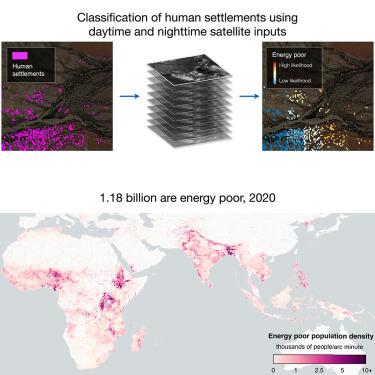Joule ( IF 38.6 ) Pub Date : 2024-05-24 , DOI: 10.1016/j.joule.2024.05.001 Brian Min , Zachary P. O’Keeffe , Babatunde Abidoye , Kwawu Mensan Gaba , Trevor Monroe , Benjamin P. Stewart , Kimberly Baugh , Bruno Sánchez-Andrade Nuño

|
Leveraging computational analysis of remotely sensed data captured over nearly 3,000 nights, we generate indicators of electricity poverty at the settlement level and over time. We demonstrate the reliability and validity of these classifications against ground-based surveys at multiple scales. At least 1.18 billion are energy poor across the developing world, revealing no statistical evidence of electricity usage from space. That total is 60% higher than the official global estimate of 733 million lacking electricity access, indicating that far more work is needed to address energy justice and equity gaps. Most of the energy poor live in areas that are more remote, less densely populated, and more rugged than energy-abundant areas. These methods provide new tracking and monitoring capabilities in the global effort to ensure affordable, reliable, and sustainable energy for all.

















































 京公网安备 11010802027423号
京公网安备 11010802027423号